Bringing the outdoors inside the home is not new. In fact, this trend has gained immense popularity in interior design. The term for incorporating nature with interior design is biophilic design. It means creating a rejuvenating and harmonious home environment, particularly via indoor plants, to form a biophilic connection.
This article explores ideas for incorporating indoor plants into your home’s interior. You will also find the types of plants you should bring inside and some tips for their care and maintenance.
- Purify the Air Quality
- Calming Effect on our Bodies
- Increase Humidity Levels
- Add Sensory Appeal to Interior Design
- Factors Affecting The Choice of Indoor Plants in Your Home
- Ways to Arrange and Place Indoor Plants in Your Home
- Caring for Your Indoor Plants – Maintenance Tips
- Commonly-Faced Challenges with Indoor Plants at Home and Tips to Correct Them
- FAQs
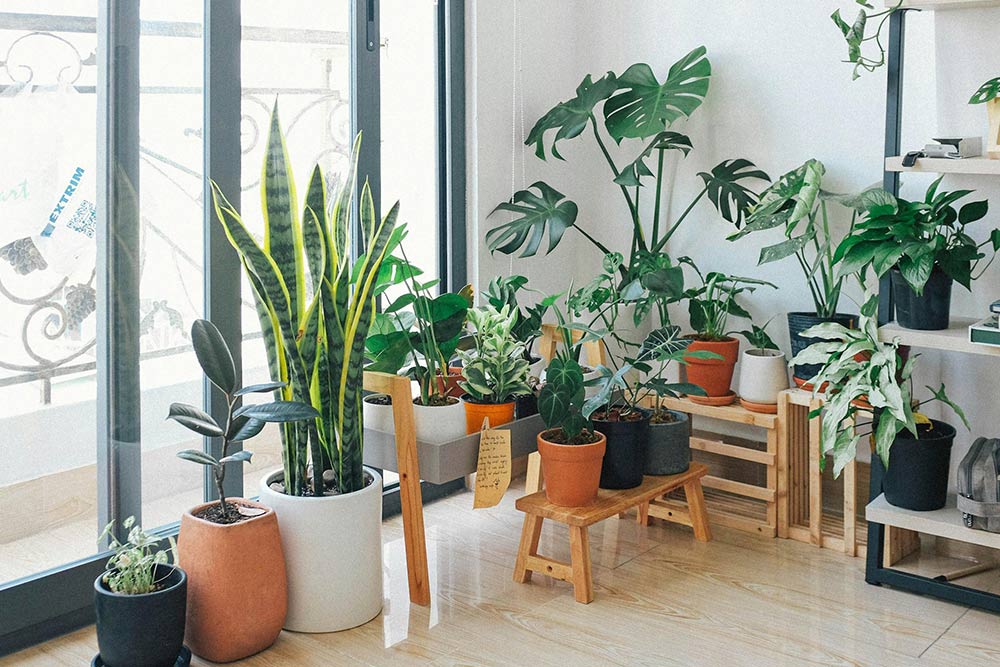
Why You Should Incorporate Indoor Plants in Your Home’s Interior
Though underestimated, indoor plants possess some remarkable qualities beyond their ornamental purpose. They have a significant impact on our physical and mental well-being. For instance:
Indoor Plants Purify the Air Quality
A benefit of bringing indoor plants into your home is that they help purify the air, improving its quality. Through photosynthesis, they release oxygen in the air and absorb carbon dioxide.
This exchange destroys harmful chemicals in the air and enhances the air quality. It also helps prevent health risks like asthma and other respiratory allergies. When decorating high-ledge in the living room, you can add indoor plants to improve the air quality.
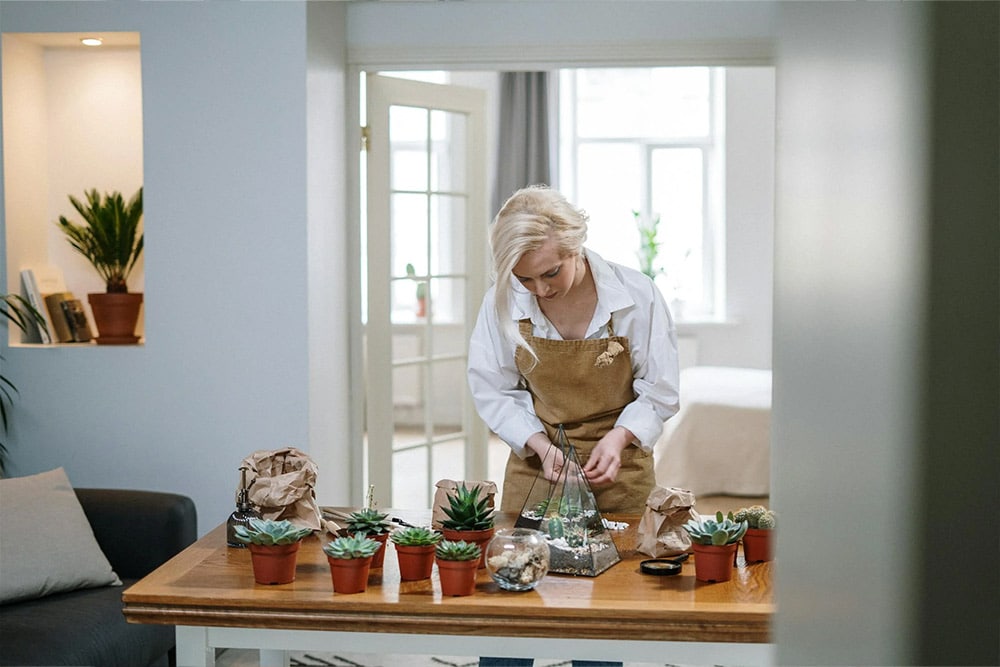
Indoor Plants Have a Calming Effect on Our Bodies
Many studies and research have indicated that plants inside the home can reduce stress and anxiety levels, calming our minds. They also help lower blood pressure and boost productivity and creativity.
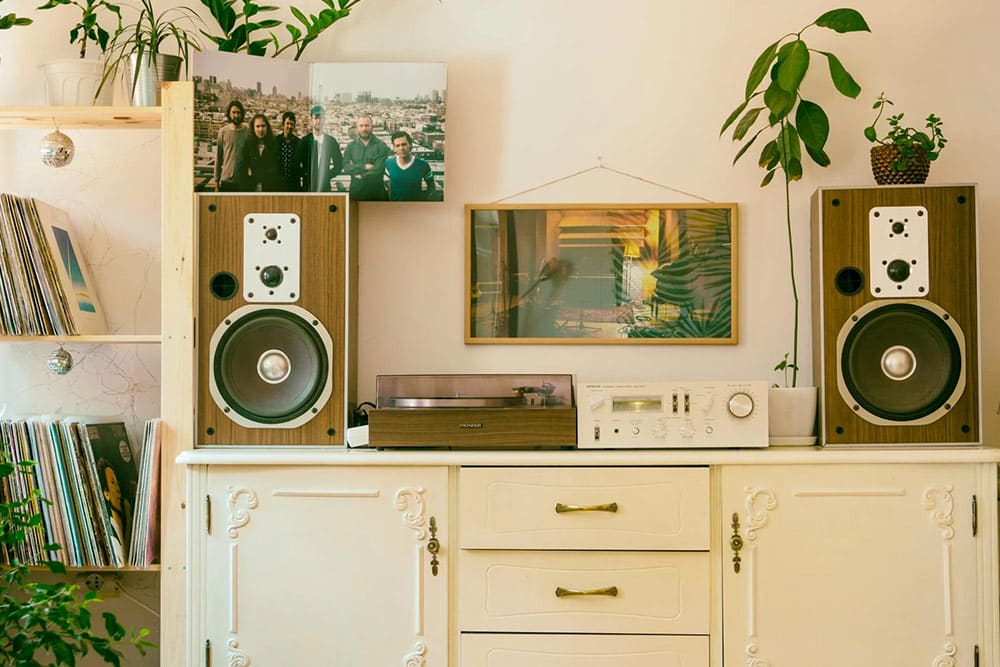
Indoor Plants Can Increase Humidity Levels
Indoor plants can increase humidity, which is beneficial during the dry season. By releasing water vapours via transpiration, they can help optimise the moisture level in the air.
Indoor Plants Add Sensory Appeal to Interior Design
Due to their various sizes, shapes, and types, indoor plants can enhance the aesthetic appeal of a home’s interior. The green colour is also soothing to the eyes. Indoor plants with flowers make the house smell great every time.
The indoor plants’ visual appeal makes the house more welcoming, calming, and inviting. Also, these indoor plants add to the sensory design in your home as these plants give a scent and soothing feel.
Factors Affecting The Choice of Indoor Plants in Your Home
When it comes to adding plants to your home, the most important thing to consider is choosing the best type. This is crucial to creating harmony and aesthetic appeal in your home interiors.
However, you must consider a few essential factors when choosing an indoor plant for your home. These are as follows:
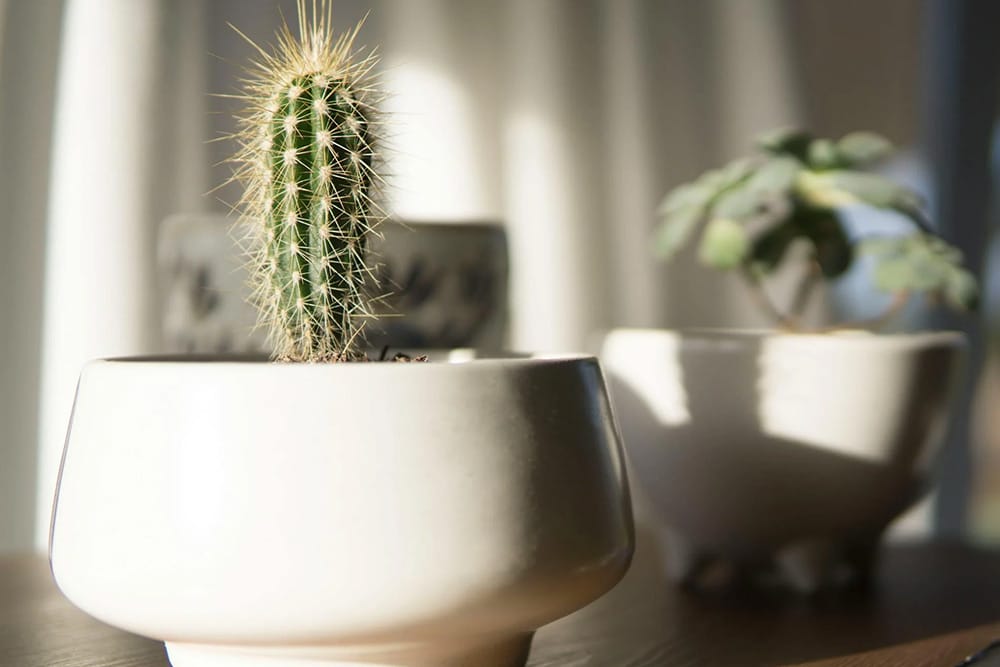
Space
- First and most importantly, evaluate how much space you have to fit indoor plants inside your home.
- You can also determine the best spots to keep the plants.
- Consider whether enough natural light, room temperature, and space would allow the plants to thrive.
- All these elements help you decide better if you should bring indoor plants or invest in a vertical garden.
Choose the Right Plant Types
Go with the plants that best suit your area’s environmental conditions. If you live in a dry region or an area with limited sunlight, be careful. Research the requirements of each chosen indoor plant to ensure it will thrive.
One of the home decor ideas is to add the right type of plants. Here are some examples:
- Succulents: Known for their fleshy leaves and water-storing ability, succulents are ideal for dry weather conditions. They come in several shapes and sizes, perfect for indoors and outdoors.
- Orchids: Orchids are famous for their colourful and exotic flowers. Though they are an excellent choice for indoor ornamental, orchids require extra care and attention. They thrive in bright, indirect sunlight and require specific moisture and watering levels.
- Peace Lilies: Peace lilies, with their shiny green leaves and white flowers, make great indoor plants. They thrive in low-to-moderate conditions and are known for their air-purifying qualities.
- Ferns: Ferns are lush, green plants known for their ability to thrive in low-light conditions. However, these indoor plants require continuous moisture to grow.
- Snake Plants: Also known as Sanseveira, snake plants are the best choice for indoor planting for beginners. They are resilient and can tolerate very low light conditions. They come in various shapes and sizes with their striking upright foliage.
- Pothos: Pothos, or Devil’s Ivy, is a flexible trailing plant that grows well in different light conditions. Its heart-shaped leaves, available in various shades of green, make it a popular choice for adding greenery to any room.
- Spider Plant: Popular for their cascading leaves, spider plants are great for hanging baskets or elevated surfaces like vertical gardens. They are low-maintenance, requiring indirect, bright light and low watering.
- Aloe Vera: Aloe vera is not just a popular indoor plant; it’s also known for its medicinal properties. Its thick, fleshy leaves contain a gel with various healing benefits. Aloe vera plants do well in bright light and need well-draining soil to thrive.
Lights
Evaluate the lighting in each room. Some plants thrive in bright, indirect light, while others do better in low-light conditions. Observe how natural light filters into each space throughout the day and select plants that match those conditions. Moreover, this is how you can improve home lighting with plants, placing them strategically.
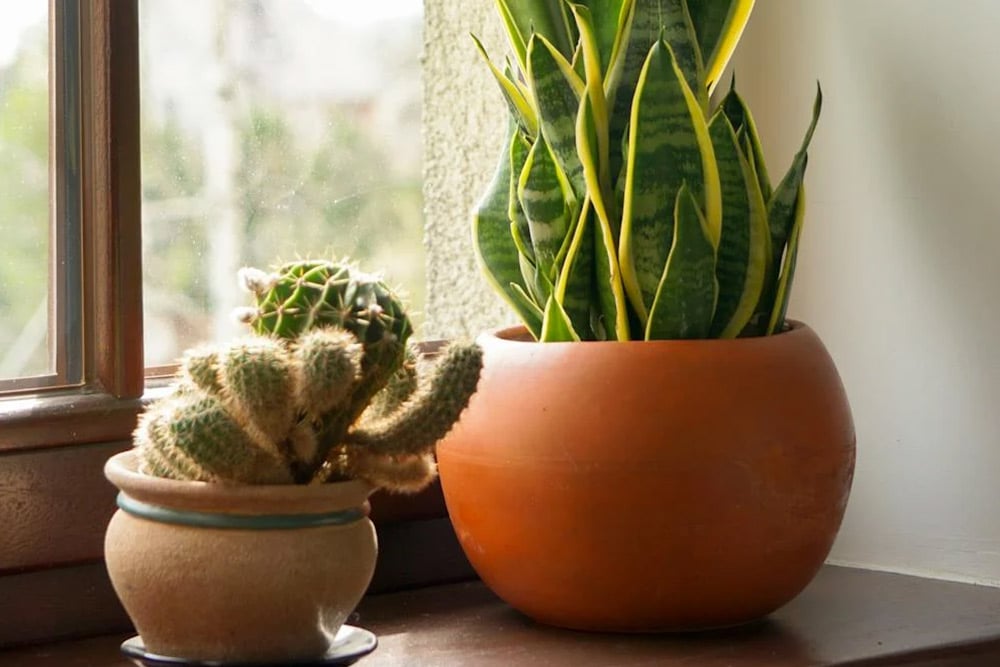
This will help ensure your plants get enough light without being exposed to direct sunlight, which can be harmful.
Your Time and Effort
Next, consider how much time and effort you will invest in caring for and maintaining your indoor plants. If you have a busy schedule and are a beginner, opt for low-maintenance plants like small succulents or snake plants.
These plant types require minimal watering and attention but still add loads of natural beauty to any space.
Humidity Levels
When choosing plants for home areas like bathrooms or kitchens, remember those that survive the best in high-humidity conditions. Some examples are ferns and peace lilies. On the other hand, if your home is dry due to air conditioning or heating, decorate it with desert-loving plants. These include cacti or other succulents with water-storing abilities.
Your Decoration Preference
Lastly, trust your own taste when selecting plants for your home decor! Think about the vibe and atmosphere you want to create in each room. Note whether it’s a tropical oasis with lush greenery or a minimalist sanctuary with sleek, modern houseplants.
Let your personal style guide your choices and make your space truly reflect who you are. You can also choose plants for custom home decor depending on the occasions. For instance, you can choose an indoor plant with lights for your Christmas home decoration.
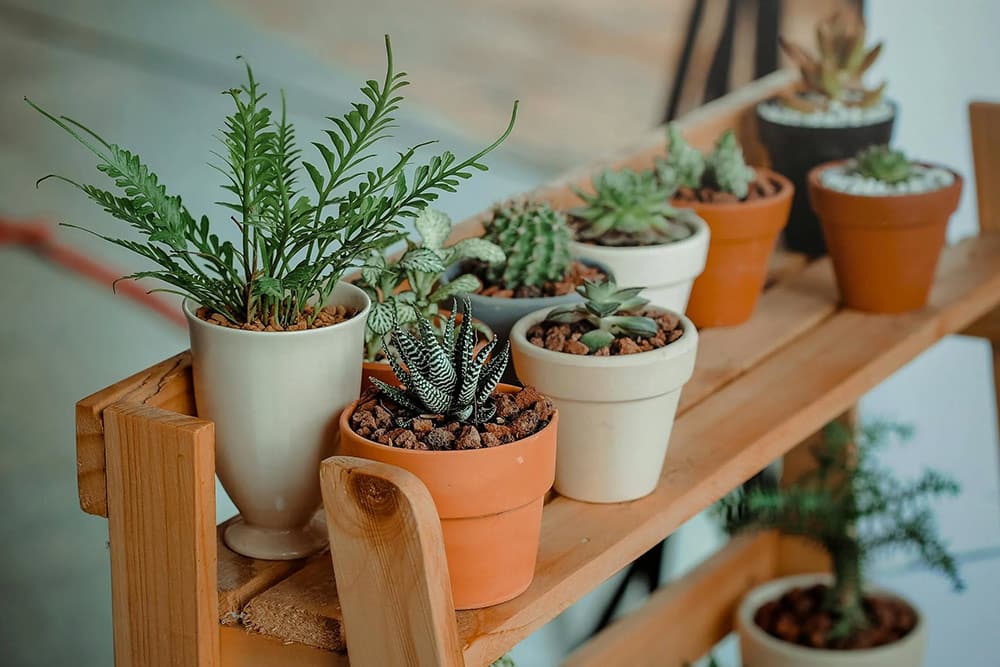
Ways to Arrange and Place Indoor Plants in Your Home
There are endless possibilities for creating stunning indoor plant displays inside your home. The following are some ideas you can take inspiration from:
Hanging Planters
Skip the traditional method of putting plant pots on the floor and hang them from the ceiling. This not only creates a lovely display but also saves space in your home.
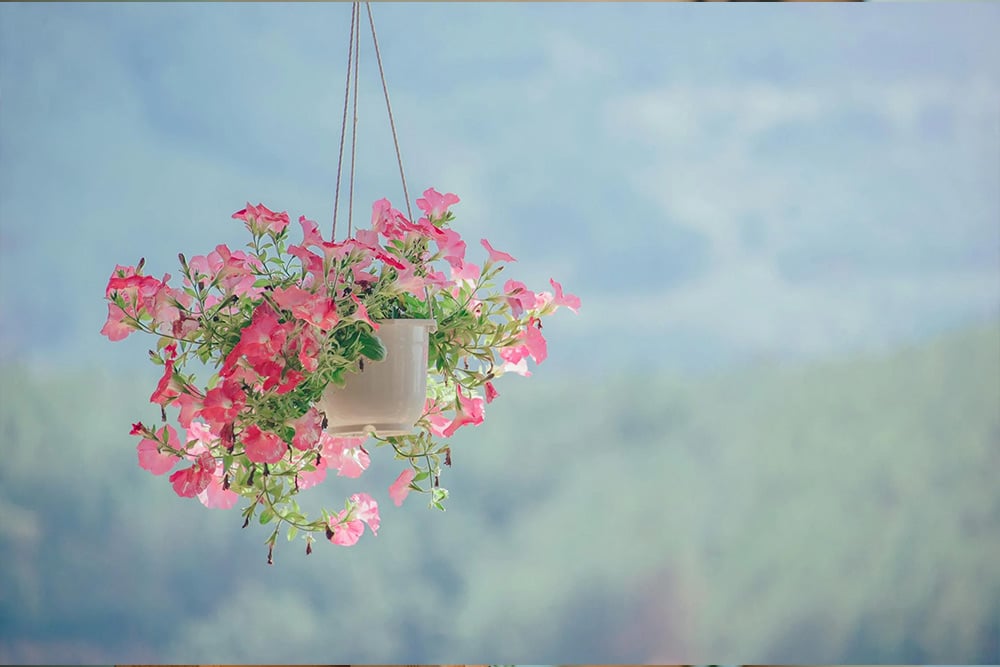
Terrariums
Terrariums are small, enclosed ecosystems within glass containers. They come in different shapes and sizes, making them beautiful focal points for tables or shelves.
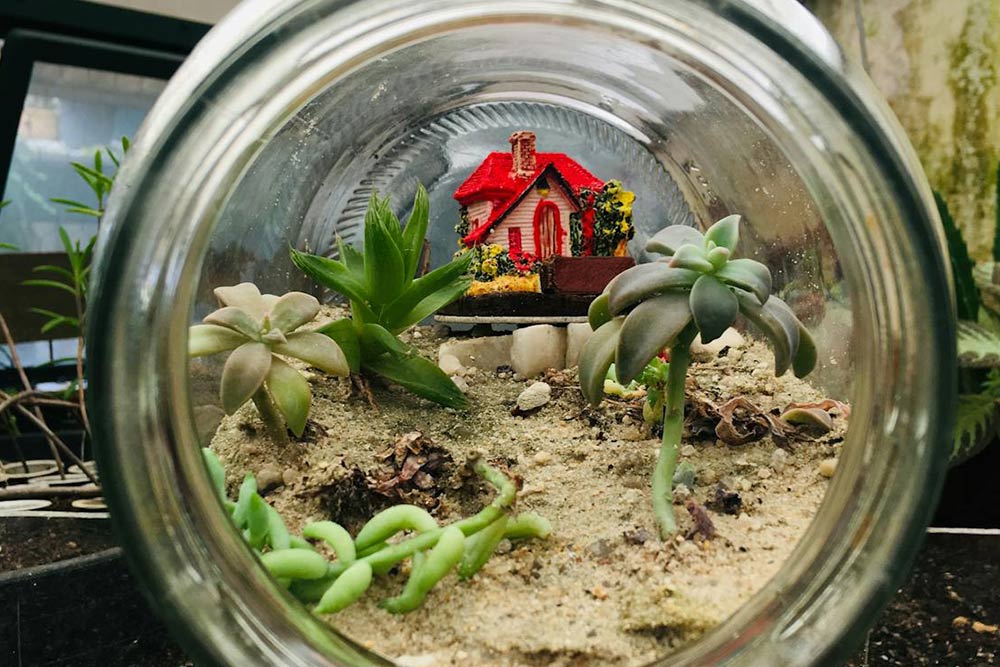
Wall-mounted Indoor Plant Planters
Wall-mounted planters are containers specially designed to be attached to walls, allowing you to grow indoor plants vertically. These planters save space and add a touch of greenery to your walls. This makes them a great option for small spaces or creating a living wall display.
They come in various styles, materials and sizes and can accommodate a range of plants.
Vertical Gardens
Also known as living or green walls, a vertical garden is a great way to save space. These gardens are especially useful in small homes with limited space.
You can add a variety of plants to your vertical garden to enhance the interior display of your home. These gardens are also a great way to purify and improve the air quality of your home.

Groupings
You can keep the indoor plants in groups of different sizes, textures, colours and shapes. This will offer an asymmetrical and vibrant look, making your home more welcoming and inviting.
Macramé Hangers Indoor Plants
Macrame hangers are a great way to display the boho trend. Hang your plants at various heights, creating texture and visual interest in your space. These decorative, hand-knotted hangers hold plant pots, allowing them to hang freely and adding an artistic touch to your home.
Create Focal Points
Use indoor plants to create a focal point in your room. For example, choose larger potted plants and keep them in visible areas. These can be in the corner, near windows, or as decor on the centre table or shelves.
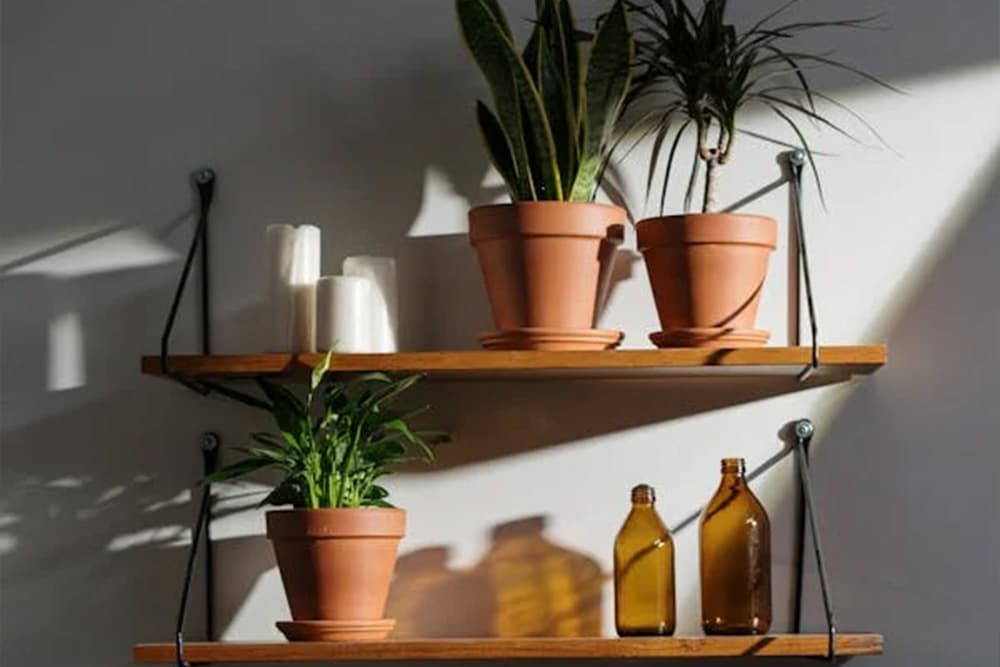
Caring for Your Indoor Plants – Maintenance Tips
Caring for your indoor plants requires special attention and effort to keep them thriving. Here are some valuable maintenance tips to make your plants long-lasting and growing:
Light and Temperature
To keep your indoor plants alive, keep them in an area with adequate light. Some plants require direct light, whereas others thrive in indirect, low-light conditions.
Moreover, avoid placing your plants near drafts or other heating sources and keep the temperature constant.
Humidity and Watering
Proper watering is very important for the growth and health of indoor plants. Since each plant has specific watering needs, it is important to remember when choosing your indoor plant.
It is best to let the soil dry out between waterings and avoid overwatering, which can cause root rot. Additionally, keep an eye on the humidity in your home, as some plants prefer more humid conditions.
Soil and Fertilisation
It is recommended to use well-draining soil specifically made for indoor plants. Regularly check the moisture of the soil and water your plant accordingly. Use a balanced indoor plant fertiliser to provide your plant with the necessary nutrients.
Grooming and Pruning
Regularly trimming and pruning your indoor plants helps maintain their shape and encourages healthy growth. Remove any yellowing or dead leaves to prevent spreading diseases and pests. You can hire pest control services in Dubai to ensure clean environment.
Grooming also involves dusting off the leaves and occasionally wiping them with a damp cloth. This will keep them clean and free from dust buildup.
Commonly-Faced Challenges with Indoor Plants at Home and Tips to Correct Them
Though indoor plants are rewarding, you might face a few challenges, especially if you are a beginner. For example:
Underwatering and Overwatering
A plant needs to be water just as much as it exactly requires. Both under and overwatering a plant can be harmful. Hence, it is best to check the soil properly to determine if the plant needs to be watered. Ensure proper drainage in the plant pot to prevent waterlogging.
Yellowing Leaves
Yellowing or decaying leaves can indicate many plant issues, such as overwatering, underwatering, nutrient deficiencies, or pests. It is important to evaluate the situation and adjust your plant care routine as needed. Removing yellowing leaves can help promote healthy growth.
Leggy Growth
Leggy growth means a plant stretches itself towards the light source, resulting in long but weak stems. To avoid this condition, ensure your plant receives light all over. Rotate your plant to ensure all parts are well-lit and even.
Pests and Diseases
Indoor plants are at risk of pests like mealybugs, spider mites and aphids. Inspect your indoor plants regularly and use insecticidal soaps or neem oil to kill plant pests. Also, be mindful of plant diseases like root rot and powdery mildew.
Wilting
Wilting or drooping leaves often signal issues like underwatering, overwatering, or environmental stress. Check the soil moisture and adjust your watering routine accordingly. Ensure your plants are in the right lighting conditions and kept away from drafts to help them thrive.
FAQs
One potted plant isn’t enough—bring nature by filling your home with greenery.
– Grow herbs on a windowsill, bring in potted lemon or lime trees, add cacti, and create terrariums – throughout your space
– Include plants in every room to create a lush environment.
– Transform your bathroom into a spa by adding plants that thrive in humidity.
You can circulate fresh air between your indoor plants by placing a fan in your rooms. This way, germs and fungus are less likely to grow, making your plant stems stronger because of the flowing air.
In today’s fast-paced world, where nature is often overlooked, indoor plants provide a way to reconnect with the environment. They also enhance our living spaces effortlessly. Adding indoor plants to your home is more than just an interior design decision. Also, if you are have an outdoor space, you can learn the tips for hot weather gardening.
For more information on home decor and choosing the plants, keep reading the Property Finder Blog.